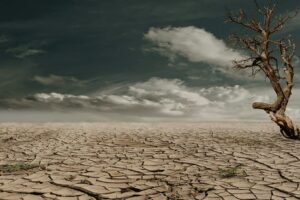Japan, a country renowned for its cherry blossoms and snow-capped mountains, is at the forefront of a global battle. It’s not a fight against a traditional enemy, but a war against an invisible, yet pervasive threat: climate change. From scorching summers to devastating typhoons, Japan’s changing weather patterns are a stark reminder of the urgent need for action.
Yet, Japan isn’t just a victim of climate change; it’s also a part of the solution. As a technological powerhouse, it’s leading the charge in innovative strategies to mitigate the impacts of our changing climate. This article delves into Japan’s unique climate challenges and the steps it’s taking to combat them. Buckle up for a journey into the heart of Japan’s fight against climate change.
Understanding the Basics of Japan’s Climate
Equal parts complex and fascinating, Japan’s climate presents a unique blend of geographical influences and seasonal changes. In this section, we delve into the reasons behind Japan’s specific climate nuances.
 Japan’s Geographic Location and Its Impact on Climate
Japan’s Geographic Location and Its Impact on Climate
Straddling both temperate and subtropical zones, Japan’s geographic location contributes greatly to its climate. The archipelago, extending from north to south along the East Asian coast, exhibits a remarkable climate diversity. For instance, it’s the location that results in the cold, snowy winters in Hokkaido, northern Japan, contrasting with the semi-tropical climate in Okinawa, southern Japan.
Furthermore, Japan’s coastal nature invites specific weather patterns attributable to sea currents. The Japan Current, for example, helps maintain relatively mild winters, whereas the Oyashio Current is responsible for cooler summers in northern and eastern coastal areas.
The Four Distinct Seasons of Japan
Despite varying patterns across the country, all regions in Japan experience four distinct seasons. Spring, recognized by the blooming cherry blossoms, is a mild and gentle season typically from March to May. Summer, from June through August, is marked by hot, humid days and can incorporate a rainy season known as the tsuyu. Come Fall, September to November, the temperatures cool and the landscapes transform with vibrant autumnal colors. Lastly, Winter, from December to February, offers chilly temperatures nationwide with heavy snowfall commonly occurring in regions like Hokkaido and the Japan Sea side.
These four seasons prominently impact not just the weather, but also the culture, cuisine, and lifestyle in Japan, making them a significant aspect of the country’s unique climate.
Japan Climate Change
Addressing Japan’s climate change scenario involves understanding its present climate trends and the repercussions of global warming. This section provides a detailed exploration of these aspects.
Recent Climate Trends in Japan 
Japan’s climate trends present a unique study, characterized by noticeable fluctuations. In recent decades, a warming trend became evident, with temperatures rising by approximately 1.15 degrees Celsius between 1898 to 2018, according to the Japan Meteorological Agency. Further, the frequency of heavy rainfall events increased, amplifying discussions on climate resilience in the archipelago.
On the other hand, the frequency of typhoons making landfall in Japan sees a trend of reduction, dropping from 3.3 times a year during the 1970s to 2.3 times in the 2010s. Yet, the intensity of storms remains a critical concern.
The Impact of Global Warming on Japan
Global warming significantly impacts Japan, principally through alterations in the weather patterns. It’s associated with rising sea-levels, potentially leading to coastal erosion and threatening low-lying areas. Additionally, Japan experienced an increased occurrence of heatwaves, resulting in severe health risks and even fatalities.
 Wildlife species and ecosystems also bear the brunt of warming temperatures. For instance, the habitat range of Asiatic Black Bear has altered significantly, indicating potential broad-scale alterations in biodiversity.
Wildlife species and ecosystems also bear the brunt of warming temperatures. For instance, the habitat range of Asiatic Black Bear has altered significantly, indicating potential broad-scale alterations in biodiversity.
Moreover, global warming may alter the distinct seasoning of Japan, threatening the cultural tradition and agricultural operations reliant on the predictability and variety of the country’s four seasons. Therefore, understanding the immediate impact of global warming on Japan is not only crucial from an environmental standpoint but also from a socio-economic perspective.
Japan’s climate change story is a tale of resilience and innovation. It’s a nation grappling with the harsh realities of a changing environment, but it’s also a country committed to finding solutions. Japan’s journey towards climate resilience is a testament to its dedication and tenacity, offering valuable lessons for other nations facing similar environmental challenges.



